
Sign in to your XDA account
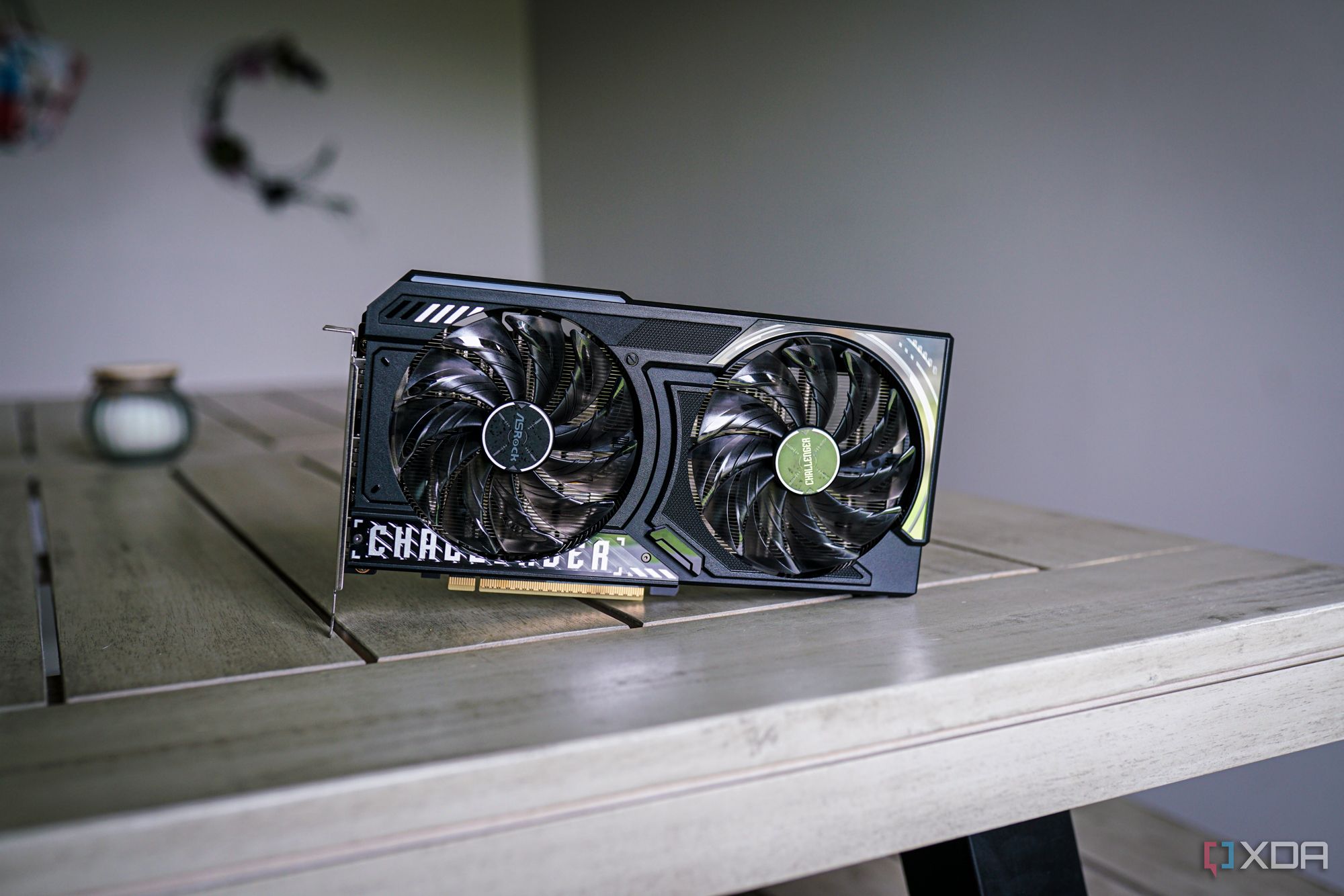
It's been the better part of a decade since AMD had a true Nvidia competitor on its hands, but the RX 9060 XT is exactly that. Sure, the RX 6900 XT matched the RTX 3090, and the RX 7800 XT was highly competitive with the RTX 4070. But those aren't the battlefields where Nvidia shows overwhelming force. It's in 60-class offerings, GPUs that arrive at or around $300, where Nvidia shows how dominant it is in the GPU market. You don't need to look further than the monthly Steam hardware survey to see that.
The RX 5600 XT was stuck without ray tracing support, the RX 6600 and its XT model were sullied by the pandemic and following GPU shortage. And the most recent RX 7600 was hamstrung by VRAM and a lack of DLSS, and even its bargain bin pricing couldn't make up that gap. The RX 9060 XT is something different. It's not the show-stopping GPU we saw with the release of the RX 9070 XT, punching far above what its price would suggest. The RX 9060 XT's strength is how it nestles into Nvidia's current-gen offerings. For the first time in a long time, AMD's mainstream GPU truly feels like the better option.
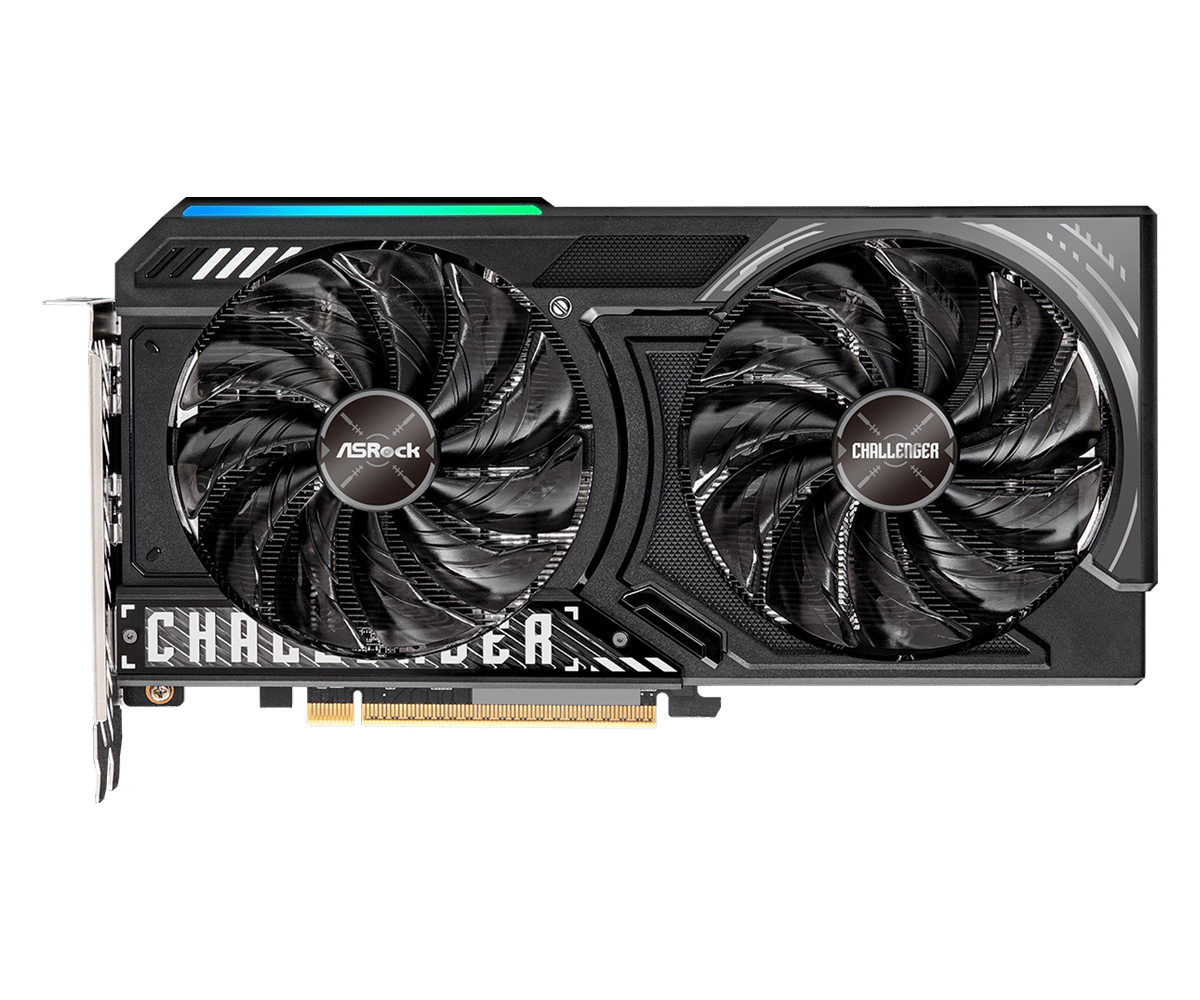
Memory Clock Speed 2518MHz
Architecture RDNA 4
Process TSMC N4P
Shader Units 2048
AMD's RX 9060 XT doesn't pull any punches, and with its smart placement in the current-gen GPU market, it doesn't need to.
Pros & Cons
- Very attractive MSRP
- FSR 4 looks incredible
- 16GB model has enough grunt for 1440p
- Prices are likely to climb
- FSR 4 support still not as broad as DLSS
AMD Radeon RX 9060 XT (16GB) pricing and availability
A lot of the RX 9060 XT's value is predicated on its pricing, and it's impossible to say where prices will end up in a few months' time. There's a cat-and-mouse game of tariffs to contend with, AMD isn't releasing a first-party design, and most board partners have been hedging their bets on pricing — and probably making out with a healthy profit as a result. That's before talking about retailers raising prices to capitalize on demand and scalpers. All of this is to say that the $300 MSRP for the 8GB model and $350 for the 16GB model are optimistic. Prices will likely climb higher, but the RX 9060 XT certainly has some wiggle room before it becomes a bad deal.
AMD compares the RX 9060 XT to the RTX 5060 Ti, undercutting Nvidia on both price and performance. I think that's a poor point of comparison. The RTX 5060 Ti is clearly faster in a like-for-like comparison with VRAM capacity, and it only shows weakness when you pit the 16GB RX 9060 XT against the 8GB RTX 5060 Ti. That may make sense from a pricing standpoint, but it's not exactly fair. The far more interesting comparison is to the RTX 5060. This is Nvidia's continuation of a long lineage of mainstream graphics cards dominating the rigs of PC gamers, and the RX 9060 XT shows clear advantages over Nvidia's latest offering.
The RTX 5060 has held steady at its price of $300, and hopefully the RX 9060 XT will hold at $350, too.
$300 and $350 are the prices set by AMD, but I wouldn't recommend the 8GB model for most gamers. AMD justifies its existence by claiming that other markets — internet cafés and the like — want 8GB graphics cards for a lower price. It's for gamers who don't want to play the latest and greatest, instead moving through the games most highly played on Steam like Counter-Strike 2, Apex Legends, and Rust. I'll make the same claim here that I did my RTX 5060 review. Gamers that are playing these titles probably don't need an RX 9060 XT in the first place, regardless of VRAM capacity. So, for most people, this is a $350 graphics card.
Setting that boundary here is important because the RTX 5060 remains a critical point of comparison for the RX 9060 XT, and with 16GB of VRAM, it's $50 more expensive. The RTX 5060 has held steady at its price of $300, and hopefully the RX 9060 XT will hold at $350, too. If it does, the RX 9060 XT is undoubtedly an Nvidia killer. You're getting better performance, comparable ray tracing, FSR 4, and 16GB of VRAM for $50 more. Assuming prices go up, I wouldn't spend more than $400 on the RX 9060 XT. That's a price where even the 8GB RTX 5060 Ti is more expensive, so it makes sense to go with the RX 9060 XT. If prices go above that point, AMD is stepping on the toes of the 16GB RTX 5060 Ti, and Nvidia cleanly wins that battle.
Shader Units 2048
Ray Accelerators/Cores 32
AI Accelerators/Cores 128
Base Clock Speed 2220MHz
Boost Clock Speed 3130MHz
Memory Clock Speed 2518MHz
Memory Capacity 16GB GDDR6
Memory Bus 128-bit
Memory Bandwidth 322.3GB/s
Power Draw 160W
Architecture RDNA 4
Process TSMC N4P
No reference design, but plenty of options
And a familiar dual-fan configuration from ASRock
AMD has done away with its Made by AMD (MBA) designs, so you'll only be able to find the RX 9060 XT from board partners. The model I looked at comes from ASRock, and it's the RX 9060 XT Challenger OC model. As the name reveals, this is an overclocked model that offers an extra 160MHz over the maximum boost clock speed from the factory, as well as an extra 270MHz on the Game Clock. There's not a ton to gain from overclocking the actual GPU core these days, and some users have already demonstrated overclocking the RX 9060 XT easily to 3.5GHz. Even if you have a stock model, you shouldn't have any issues closing the gap with OC models.
The Challenger design from ASRock is a dual-fan, dual-slot card, and it's powered by a single 8-pin cable. ASRock also has its triple-fan Steel Legend model available in white, which we saw in action in our RX 9070 review. There are dozens of designs available from other board partners, including models from Asus, Gigabyte, Acer, Sapphire, Yeston, and XFX.
Blistering 1080p gaming, usable 1440p specs
There aren't a ton of surprises on the performance front
AMD's RX 9070 XT drew pretty clear comparisons to Nvidia's RTX 5070 Ti, but the RX 9060 XT doesn't have a clean Nvidia analogue. It's not as fast as the RTX 5060 Ti in a like-for-like VRAM comparison, but it's also significantly faster than the RTX 5060, even down at 1080p. That's the real battlefield for AMD with the RX 9060 XT. With the RTX 5060 Ti pushing prices upwards of $500 for the 16GB model, the RX 9060 XT at its MSRP of $350 is extremely attractive. It has a 6% lead over the RTX 5060 at 1080p, a larger jump of 10% at 1440p, and it comes with 16GB of VRAM. That's worth an extra $50 assuming you can find the RX 9060 XT at list price.
Before digging into all the results, here's a look at the test bench I used:
|
CPU |
AMD Ryzen 9 9950X |
|
Motherboard |
Gigabyte X870E Aorus Master |
|
Cooler |
MSI MEG CoreLiquid S360 |
|
Memory |
2x16GB Corsair Vengeance DDR5-6000 |
|
Storage |
2TB Samsung 990 Pro |
|
PSU |
1,200W Gigabyte Aorus P1200 |
The closest point of comparison for the RX 9060 XT is last-gen's RX 7700 XT. The RX 9060 XT ends up just a touch faster across resolutions, which is largely a result of the ray tracing improvements in RDNA 4. I'll dig into the ray tracing results in the next section, but the scores you can see in my chart of 3D Mark Port Royal above paint a pretty clear picture of how the RX 9060 XT improves AMD's ray tracing story.
Down at 1080p, it's hard to justify anything other than the RTX 9060 XT, short of the RTX 5060 Ti. It maintains a solid lead of 12% on average, and even the 8GB model shouldn't be significantly slower. That completely changes at 1440p, however. The 16GB RTX 5060 Ti maintains a 12% lead at 1440p, but the 8GB model would almost certainly fall short. You can see that in action with the other GPUs on this list, most notably the RTX 4060 Ti and RTX 5060, both with 8GB of VRAM. That bottleneck only becomes more extreme at 4K.
|
|
|
|
|
|
|
|
|
|
|
|
|
|
|
|
|
|
|
|
|
|
|
|
|
|
|
|
Obviously, VRAM limitations also apply to the 8GB model of the RX 9060 XT, but it's hard not to spring for the 16GB model when it's only $50 more. In a lot of ways, the 16GB model is very similar to the Arc B580. Based on raw GPU power alone, you're mostly limited to 1080p. Once you throw the excellent upscaling of FSR 4 into the mix, and maybe a little frame generation, you're looking at very competent 1440p experience that's only enabled with higher VRAM capacities. Like the Arc B580, it's a budget-conscious card that still has enough legs to grow alongside your rig, at least if you pick up the 16GB model.
Ray tracing and FSR 4 get a massive boost
After years of trial and error, it's finally coming together
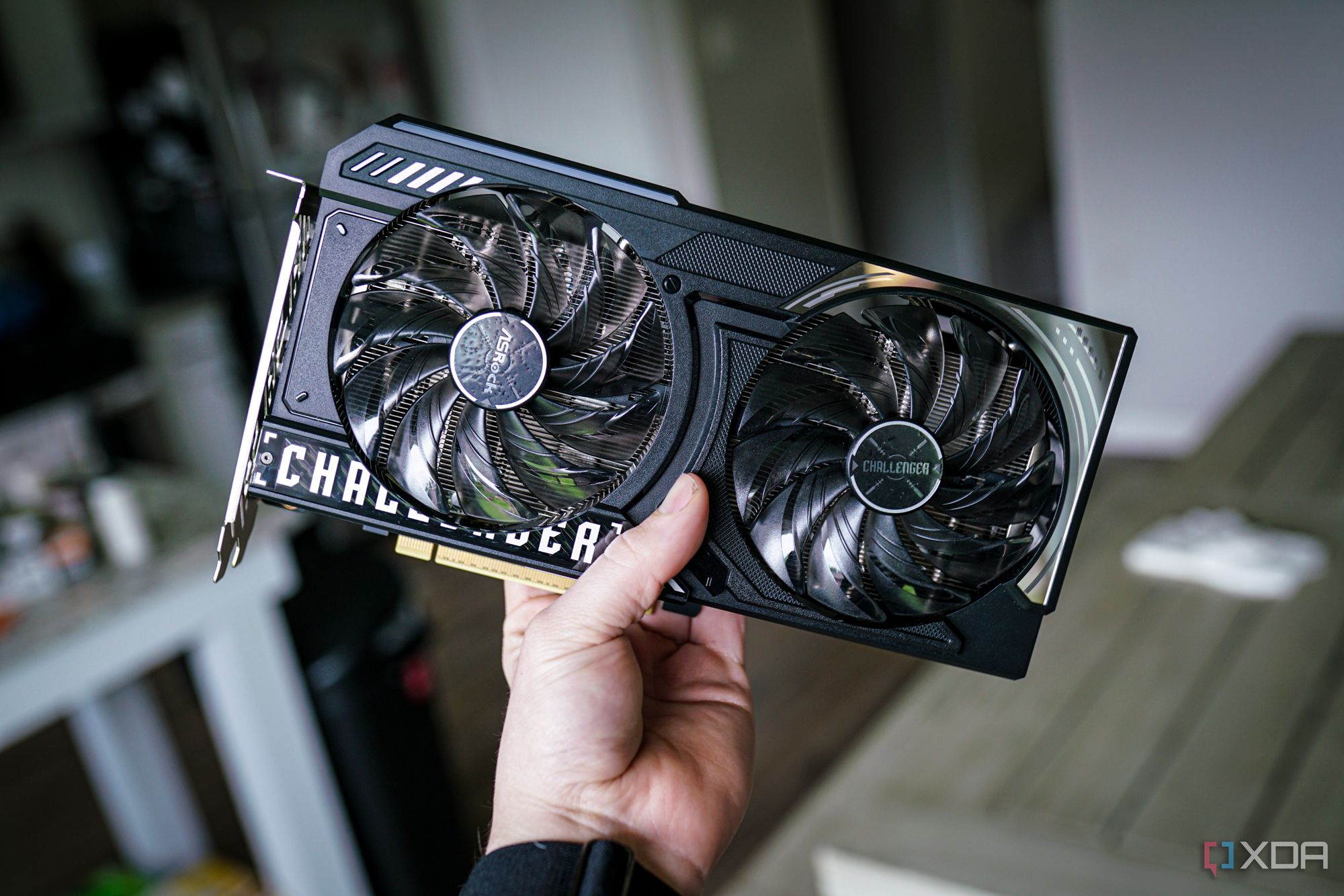
One of the biggest upgrades we've seen with RDNA 4 is ray tracing performance, and the RX 9060 XT puts that on full display. In rasterized performance, the RX 9060 XT and last-gen's RX 7700 XT trade blows, but when you flick on ray tracing, the RX 9060 XT comes out clearly ahead. AMD is offering almost identical ray tracing performance to the RTX 5060 at 1080p, with AMD taking the lead at higher resolutions as Nvidia's GPU becomes constrained by VRAM. With RDNA 3, AMD's ray tracing efforts were pretty good. You could run less demanding ray tracing implementations with ease, but Nvidia showed a clear lead in more demanding ray tracing scenarios. That's not the case here.
|
|
|
|
|
|
|
|
|
|
|
|
Across games, the RX 9060 XT is in lockstep with the RTX 5060, and it often outclasses last-gen's RTX 4060 Ti. The most impressive showing for ray tracing doesn't come from this batch of games, however. It comes from Black Myth: Wukong, which has ray tracing baked into some elements of the game. This is a historically taxing benchmark for AMD and Intel, but the RX 9060 XT is able to keep pace with the Nvidia competition without breaking a sweat. Given that the RX 9060 XT is faster than the RTX 5060 in rasterized performance, and is on-par in ray tracing performance, Nvidia still technically holds the ray tracing crown. That technicality is becoming very difficult to acknowledge, however.
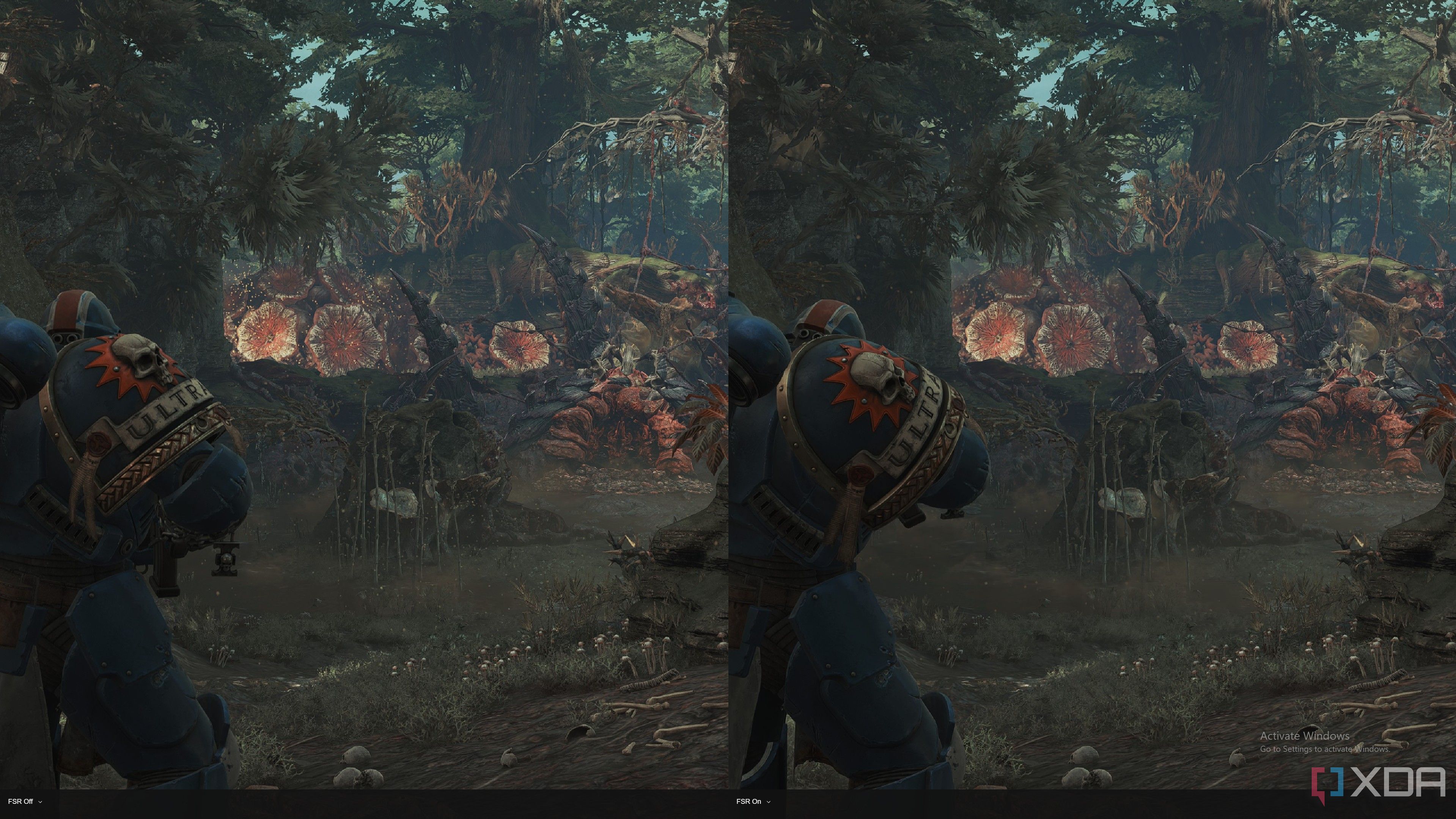
Another thing that's becoming difficult to acknowledge is that DLSS is strictly better than FSR. Yes, DLSS 4 and its new transformer model show slightly better quality, and Nvidia's latest GPUs have access to Multi-Frame Generation (MFG). FSR 4 is extremely close, though. Looking at the 4K comparisons you can see above and below, where FSR 4 was set to Performance mode, it's difficult to find any differences between it and native resolution. This is at least as good as the old CNN model that Nvidia used in DLSS for years, and maybe even a little better.
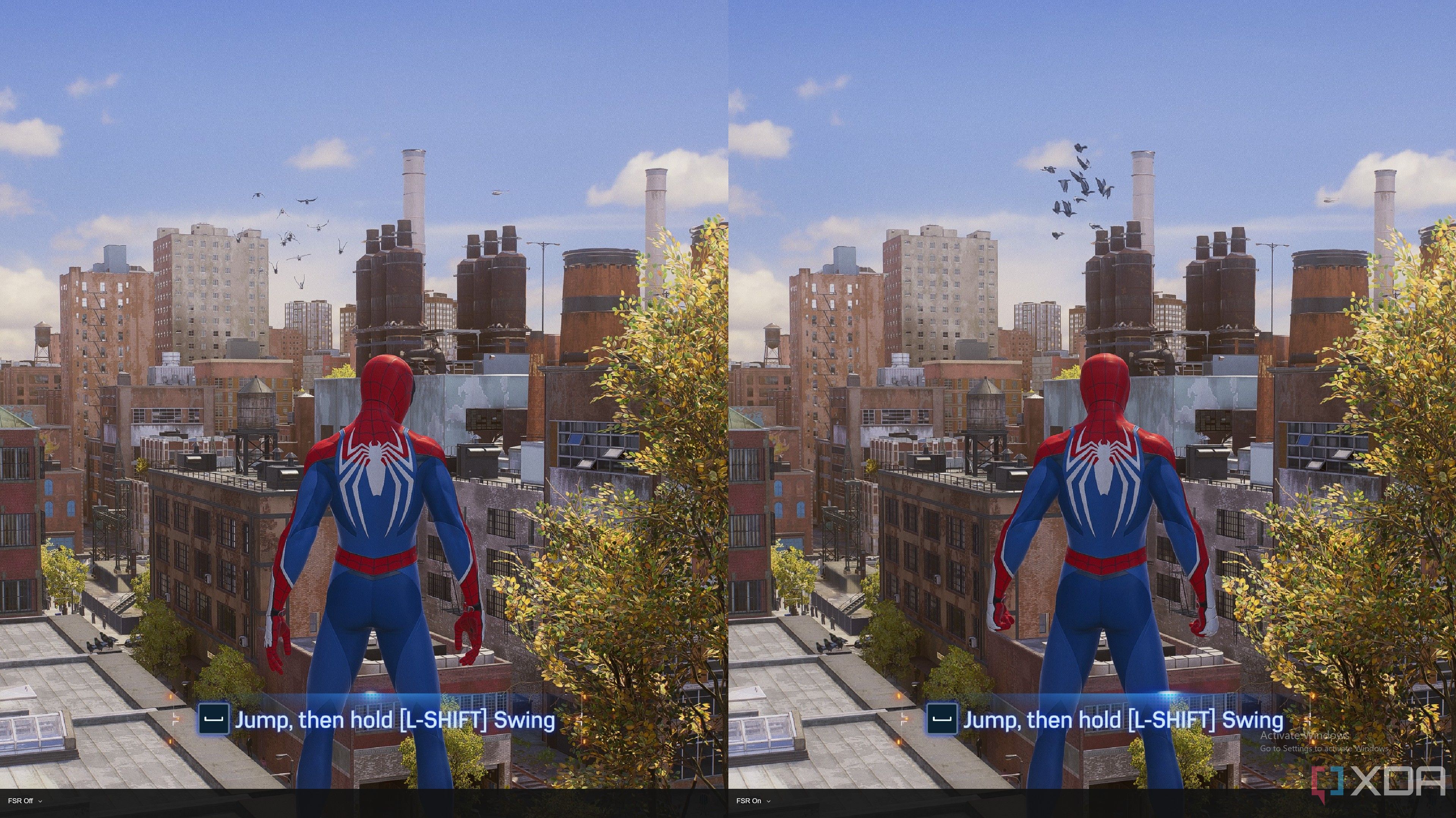
I won't go as far as to say that FSR 4 looks as good as DLSS 4. That's not true. I will say that you'd never notice the difference between them during real gameplay. There's always been an asterisk with FSR. Although previous versions have their draw, I'd never recommend pushing down below the Balanced preset, at least for the best image quality. FSR 4 gives you the full range. No, you're not getting MFG, but AMD's promised FSR Redstone update later this year looks like it'll match Nvidia point-for-point otherwise. And right now, the foundation of FSR 4 is already giving DLSS a run for its money.
|
49 fps |
131 fps |
Performance + Frame Gen |
|
95 fps |
176 fps |
Balanced + Frame Gen |
|
48.5 fps |
129.2 fps |
Balanced + Frame Gen |
|
31.3 fps |
105.2 fps |
Performance + Frame Gen |
Unsurprisingly, performance is great with FSR 4, just as it is with any upscaling and frame generation technology. What really stands out is the resolution, however. The results above are at 1440p, while the RX 9060 XT is mainly targeting 1080p gamers. With a healthy dose of upscaling and frame generation, you can get an excellent 1440p experience out of this GPU. That's really only enabled by the 16GB model, however. As I saw with a card like the RTX 5060, an 8GB frame buffer struggles to scale up to higher resolutions, even when you throw these performance-boosting features into the mix and especially with frame generation.
Should you buy the AMD Radeon RX 9060 XT?
You should buy the AMD Radeon RX 9060 XT if:
- You can find the 16GB model below $400.
- You have or plan to upgrade to a 1440p monitor.
- You're willing to wait on the FSR Redstone update.
You should NOT buy the AMD Radeon RX 9060 XT if:
- You already have an RX 7700 XT or RTX 4060 Ti (16GB), or better.
- Prices rise above $400 for the 16GB model.
- You need broader support for upscaling and/or frame generation.
The RX 9060 XT is the Nvidia killer AMD has been wanting to build for years. It's not as impressive as the RX 9070 XT, but the superpower of this GPU is how well it's positioned in the current market. It's an obvious choice over the RTX 5060, and jumping up to the RTX 5060 Ti, especially for the 16GB model, represents somewhere around a $150 increase in price for a much smaller gain in performance. AMD has released some impressive GPUs over the past few years, no doubt, but this is the first time in the better part of a decade that it's really nailed the mainstream offering.
Nvidia still holds some advantages on paper, between the souped-up transformer model of DLSS 4 and MFG on its latest cards. Those advantages are much more marginal than they used to be, however. FSR 4 can go toe-to-toe with DLSS without breaking a sweat, and features like AFMF have delivered broad frame generation support on AMD cards. And with FSR Redstone, that gap gets even smaller. Obviously, one GPU won't completely change the positions that AMD and Nvidia hold in the market. But the RX 9060 XT certainly feels like a tide shift.

Memory Clock Speed 2518MHz
Architecture RDNA 4
Process TSMC N4P
Shader Units 2048
AMD's RX 9060 XT doesn't pull any punches, and with its smart placement in the current-gen GPU market, it doesn't need to.
.png)
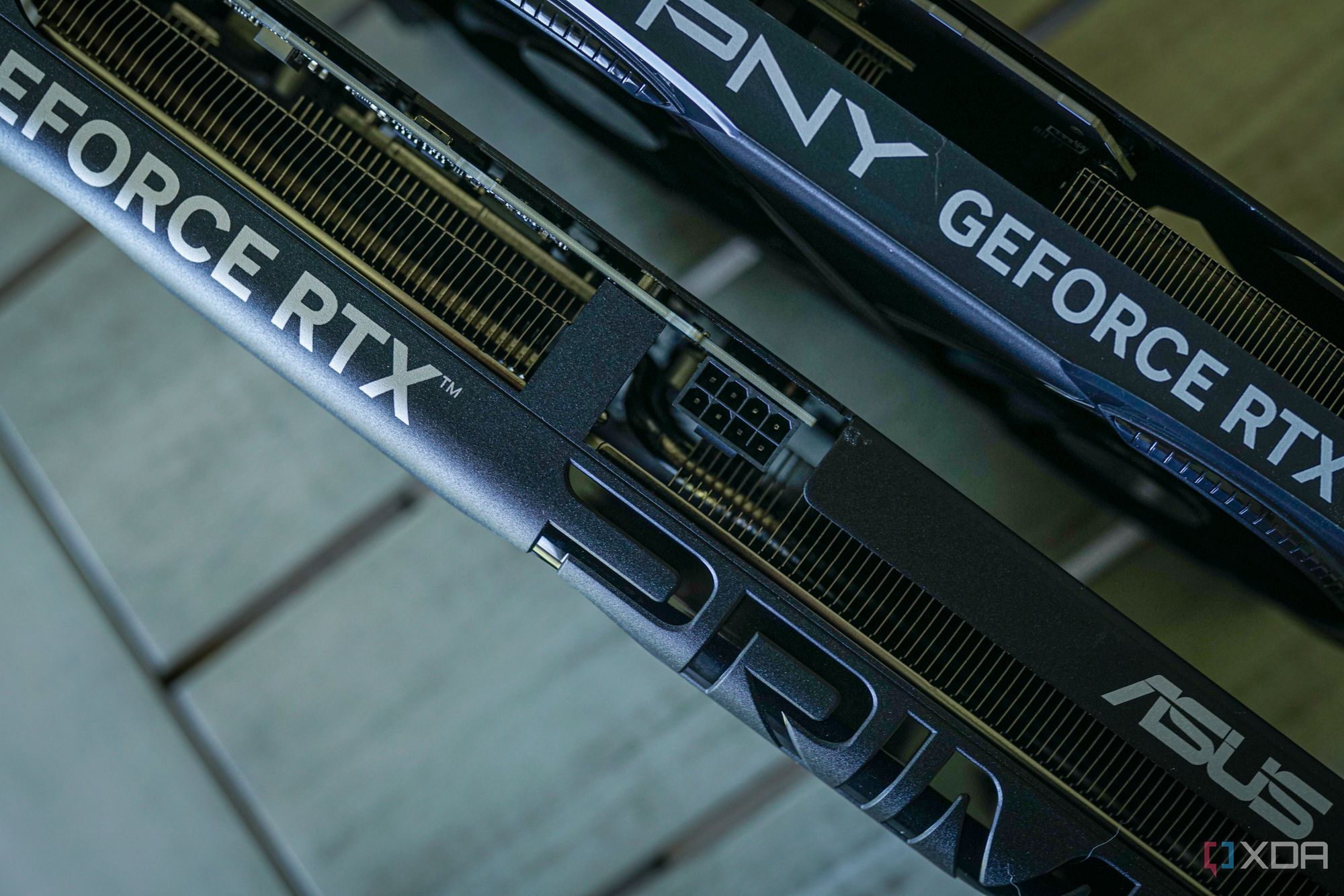
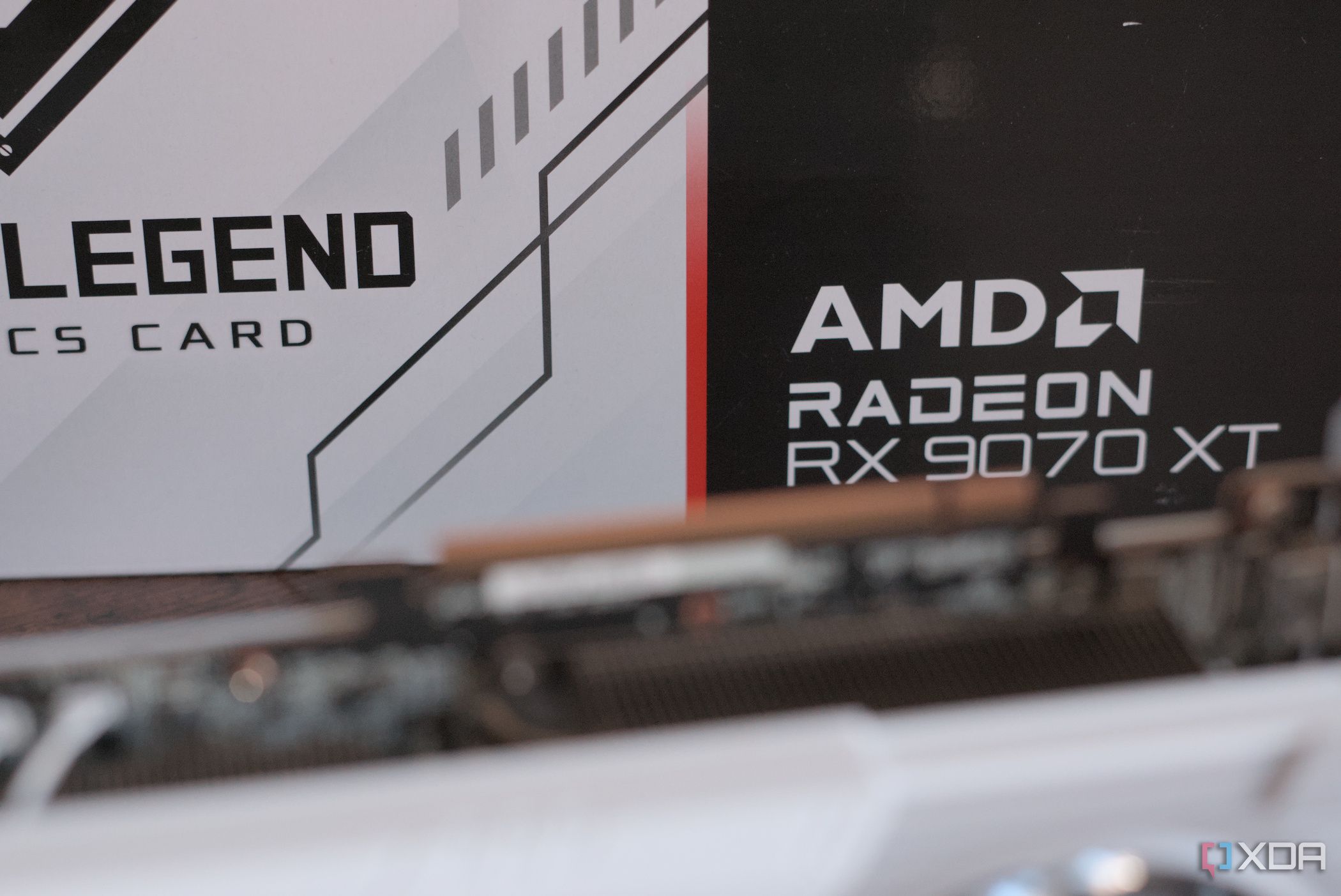


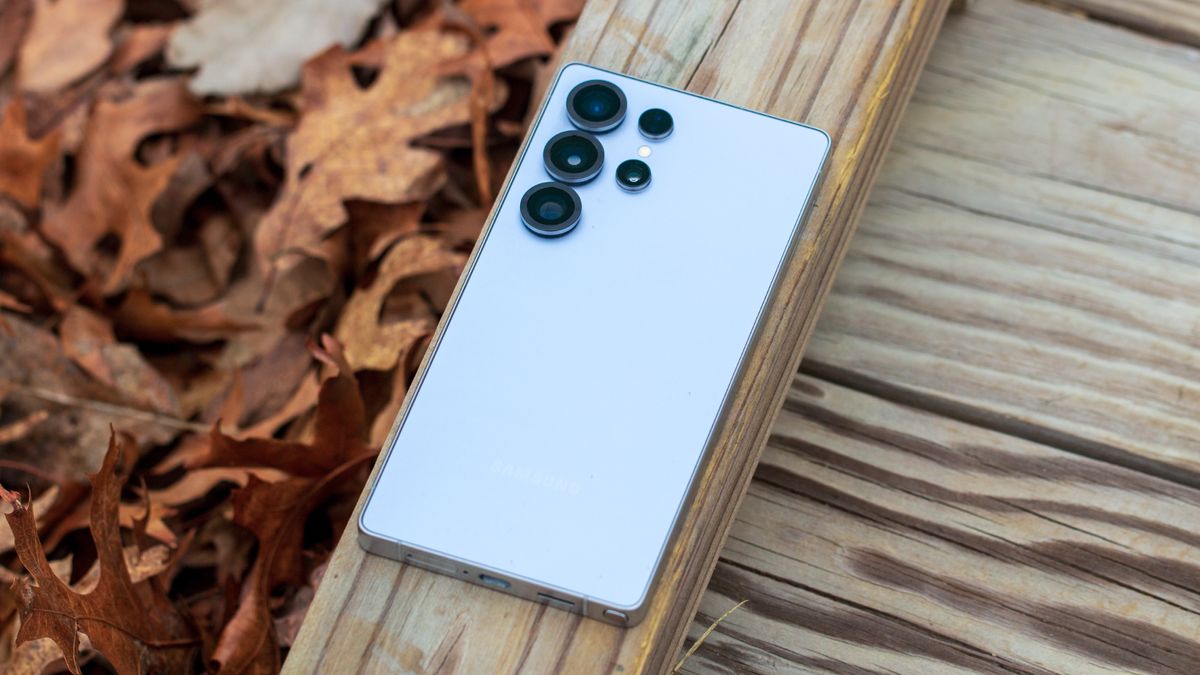







 English (US) ·
English (US) ·